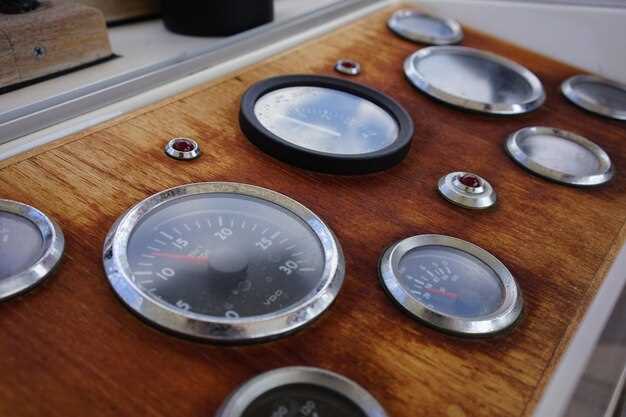
In today’s fast-paced world, the need for precise and real-time performance monitoring has never been more critical. Traditional dashboards often fall short in their ability to convey essential data in a visually engaging and informative manner. Custom gauges have emerged as a vital tool for enhancing performance insights, providing users with tailored visual representations that facilitate quick decision-making.
These bespoke gauges allow businesses to track key performance indicators (KPIs) in a more meaningful way. With the capacity to display metrics from various sources, custom gauges offer a holistic view of performance directly on the dashboard. This not only streamlines the monitoring process but also enables teams to identify potential issues before they escalate.
Furthermore, custom gauges can be designed to match specific business needs and branding. By integrating logos and selecting color schemes, organizations can create dashboards that are not only functional but also aesthetically pleasing. This boosts engagement and ensures that users are more likely to interact with the performance data presented.
Selecting the Right Type of Custom Gauge for Your Dashboard
When designing a dashboard, choosing the appropriate type of custom gauge is crucial for effective performance monitoring. Each gauge type serves different purposes and provides varying levels of data representation. Start by assessing the specific metrics you want to monitor, as this will guide your selection process.
For displaying progress toward a goal, consider using radial gauges. These gauges provide a clear visual representation of performance, making it easy to see how close you are to your targets. They are particularly effective for KPIs that are quantifiable and time-sensitive.
Linear gauges are another excellent option, especially for comparing multiple metrics on a single axis. They enable users to track performance trends over time and can be useful for displaying thresholds or ranges that indicate performance health, such as low, medium, and high levels.
For categorical data, a bullet gauge may be the best choice. This type of gauge allows viewers to quickly assess how well current values align with target benchmarks. Bullet gauges are particularly useful in environments where decisions rely on immediate performance insights.
If your dashboard requires real-time performance updates, opt for digital gauges. These offer precise numeric representations, ideal for situations where accuracy is paramount. They often include traffic light indicators to signal performance states instantly.
Finally, ensure that the custom gauge you select aligns with the overall design and usability of your dashboard. A well-chosen gauge should not only convey information effectively but also enhance the aesthetic and user experience, making data monitoring intuitive and engaging. By understanding the unique functions and applications of each gauge type, you can create a dashboard that significantly improves performance monitoring capabilities.
How to Integrate Custom Gauges with Existing Monitoring Systems
Integrating custom gauges with existing monitoring systems requires a systematic approach to ensure that they function seamlessly and provide valuable insights. Begin by assessing the current infrastructure to identify the key performance indicators (KPIs) that need monitoring. Understanding the specific metrics will guide the design of custom gauges tailored to the data being tracked.
Next, select a suitable platform for your custom gauges. Many monitoring systems support plugins or extensions. Investigate the compatibility of your chosen dashboard tool with the existing system, ensuring it can handle the integration smoothly. Popular options include Grafana, Kibana, and custom-built dashboards using libraries like D3.js or Chart.js.
Once you’ve chosen the platform, design the custom gauges. Focus on clarity and usability; each gauge should intuitively represent the data it displays. Consider factors such as color coding, scale, and labeling, which will enhance user understanding. Use real-time data feeds to ensure the gauges reflect the most current information available.
After designing the gauges, proceed with the development phase. Implement the necessary APIs or data connectors to facilitate data transfer between your monitoring systems and the custom gauges. This integration might involve programming languages like JavaScript, Python, or specialized query languages, depending on your systems.
Afterward, conduct thorough testing to ensure functionality. Validate that data flows correctly from the source to the gauge, and confirm that displays update in real-time without lag. Gather feedback from end-users to identify any additional adjustments or improvements that may enhance usability and performance.
Finally, document the entire process and provide user training to ensure that all stakeholders are equipped to utilize the custom gauges effectively. Regularly review and update the gauges as new data needs arise or as business objectives evolve. This proactive approach will maintain the relevance and efficiency of your monitoring system.
Design Considerations for User-Friendly Gauge Interfaces
Creating effective gauge interfaces requires meticulous attention to user experience. The design must convey critical performance information clearly and intuitively. Below are key considerations to enhance the usability of gauges:
Simplicity and Clarity: Gauges should present data in a straightforward manner. Avoid cluttering the interface with excessive information. Focus on the most relevant metrics to ensure users can quickly interpret the gauge status.
Color Usage: Color plays a crucial role in gauge design. Utilize a color scheme that is easy to interpret and provides a visual hierarchy. For instance, green can signify normal performance, yellow for caution, and red for critical alerts. Consistency in color usage across gauges helps users quickly assess data at a glance.
Size and Scale: The size of the gauge should be proportional to the importance of the data it represents. Larger gauges may be necessary for critical metrics that require immediate attention, whereas smaller gauges might suffice for less critical information. Ensure the scale is clearly defined to provide context for the data being displayed.
Interactive Elements: Incorporating interactive features, such as tooltips or drill-down capabilities, can enhance user engagement. Users should be able to hover over or click on gauges to access more detailed information or historical trends related to the metric.
| Consideration | Description |
|---|---|
| Simplicity and Clarity | Present data without unnecessary complexity, focusing on key metrics. |
| Color Usage | Implement a color scheme that clearly indicates performance status. |
| Size and Scale | Design gauges proportional to the importance of the data displayed. |
| Interactive Elements | Include features that allow users to explore more detailed information. |
Contextual Information: Providing context around gauge readings is essential. Including benchmarks or historical data as part of the gauge design helps users understand whether current readings are favorable or concerning.
Testing and Feedback: Regularly test gauge designs with actual users to gather feedback. User testing can reveal pain points and areas for improvement, leading to a more refined and effective gauge interface. Iterative design based on user input helps create a more user-friendly experience.
Data Visualization Techniques for Custom Gauges
Effective data visualization is crucial for enhancing performance monitoring through custom gauges. By utilizing various visualization techniques, organizations can create dashboards that not only display data but also provide clear insights into performance metrics.
1. Choosing the Right Gauge Type: The first step in data visualization for custom gauges is selecting an appropriate gauge type. Common options include radial gauges, linear gauges, and bullet graphs. Each type serves different purposes; for instance, radial gauges are effective for displaying a single metric, while linear gauges can illustrate multiple dimensions of performance.
2. Color Coding: Color plays a significant role in data visualization. Implementing a color scheme enhances gauge readability and helps users quickly assess performance levels. For example, using green to indicate optimal performance, yellow for caution, and red for critical status can instantly communicate the health of monitored parameters.
3. Dynamic Scaling: Custom gauges should incorporate dynamic scaling, allowing them to adjust based on real-time data. This technique ensures that the gauge remains relevant, enabling users to visualize performance metrics accurately regardless of fluctuations or seasonal changes.
4. Incorporating Trends: Including trend lines alongside gauge visuals can provide valuable context. For instance, by adding a line graph to a dashboard, users can observe performance changes over time. This technique allows for more informed decision-making by highlighting patterns and anomalies.
5. Tooltips and Annotations: Providing interactive elements such as tooltips or annotations can enhance user experience. When users hover over specific areas of the gauge, tooltips can display additional information, such as historical data or comparisons to benchmarks. Annotations can offer insights on significant events affecting performance, providing deeper understanding.
6. User Customization: Allowing users to personalize their gauges enhances engagement. This could involve selecting specific metrics to display, adjusting thresholds, or changing visual styles. Customization empowers users to focus on what matters most to them, resulting in more effective monitoring.
By implementing these data visualization techniques, organizations can create custom gauges that significantly improve performance monitoring. A well-designed dashboard facilitates quick interpretation of critical data and supports timely decision-making, ultimately driving operational excellence.
Real-Time Monitoring: Ensuring Accuracy and Reliability of Custom Gauges
In today’s fast-paced environment, real-time monitoring is essential for ensuring the accuracy and reliability of custom gauges. These gauges play a pivotal role in performance monitoring by providing instantaneous feedback on various parameters, helping to optimize operations and prevent potential failures.
To achieve precise measurements, it is crucial that custom gauges are calibrated accurately. Regular calibration against standard references ensures that the data displayed on the dash is both trustworthy and meaningful. This process not only guarantees that the measurements are correct but also enhances the overall performance of the monitoring system.
Integration of Advanced Technologies
Utilizing advanced technologies such as IoT (Internet of Things) can significantly enhance the capabilities of custom gauges. By connecting these gauges to a centralized dashboard, users gain access to real-time data analysis and visualization. This integration allows for immediate identification of potential discrepancies or malfunctions, ensuring that corrective actions can be taken swiftly.
Data Validation Techniques
Implementing data validation techniques is essential in maintaining the integrity of the information displayed on the dash. This involves cross-checking the data against established benchmarks and employing algorithms that can detect anomalies. By filtering out unreliable data, organizations can focus on accurate metrics, enhancing decision-making processes.
Regular Maintenance Schedules
To ensure ongoing reliability, custom gauges require regular maintenance. This includes routine checks of sensors, software updates, and hardware inspections. By adhering to a well-defined maintenance schedule, businesses can minimize the risk of unexpected failures and ensure that the gauges consistently function at peak performance.
In conclusion, real-time monitoring of custom gauges is vital for maintaining their accuracy and reliability. Through calibration, technological integration, data validation, and regular maintenance, organizations can optimize their performance monitoring systems, ultimately leading to improved operational efficiency.
Case Studies: Successful Implementations of Custom Gauges in Various Industries
Custom gauges have transformed performance monitoring across different sectors by providing tailored solutions for specific operational challenges. Here are notable case studies showcasing successful implementations:
1. Manufacturing Industry

A leading automotive manufacturer faced challenges in maintaining optimal machine performance. Traditional monitoring tools were insufficient for real-time insights.
- Solution: The company developed custom gauges that tracked performance metrics such as temperature, pressure, and RPM in real-time.
- Outcome: Implementing these gauges reduced machine downtime by 20%, significantly enhancing production efficiency.
2. Healthcare Sector
A hospital network struggled to effectively monitor patient vitals across various departments. Existing systems lacked integration and real-time capabilities.
- Solution: Custom gauges were designed to interface with existing medical devices, providing consolidated real-time data on patient health indicators.
- Outcome: The implementation led to improved patient outcomes, with quicker response times to critical changes in vital signs.
3. Energy Sector
An energy company needed to optimize the performance of its wind turbines. Standard monitoring systems did not provide the necessary granularity for effective decision-making.
- Solution: Custom gauges were created to measure wind speed, turbine efficiency, and energy output specifically for each turbine model.
- Outcome: The tailored monitoring led to a 15% increase in energy production and more efficient maintenance scheduling.
4. Agriculture
A large agricultural operation faced difficulties in monitoring soil moisture levels, which affected crop yields. Conventional gauges were not adaptable to diverse crop types.
- Solution: The farm implemented customized gauges that provided real-time data based on soil type, weather patterns, and crop needs.
- Outcome: This innovative approach resulted in a 30% improvement in water usage efficiency and an increase in overall crop yields.
5. Transportation

A logistics company required a better way to monitor fleet performance. Existing tracking solutions lacked the ability to provide detailed engine diagnostics.
- Solution: Custom gauges were developed to track fuel efficiency, engine temperature, and maintenance alerts for each vehicle.
- Outcome: The results were remarkable, with fuel costs reduced by 12% and improved fleet reliability.
These case studies highlight how the strategic use of custom gauges can lead to significant improvements in operational performance across various industries by providing tailored insights and fostering better decision-making.
